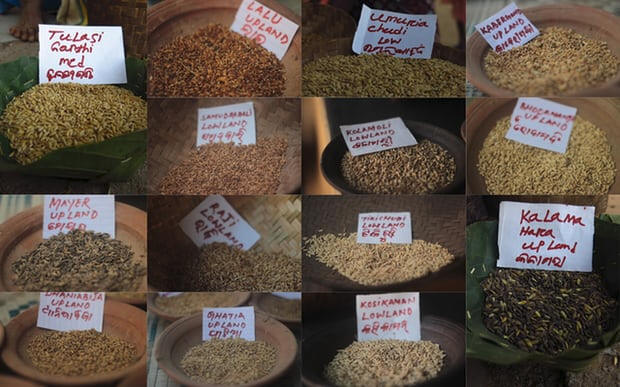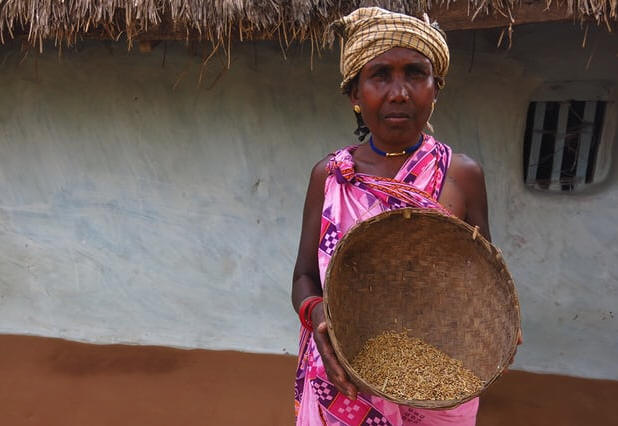 |
| Reviews and Templates for Expression We |
Why India's farmers want to conserve indigenous heirloom rice

India is rice country: the cereal provides daily sustenance for more than 60% of the population. Half a century ago, it was home to more than 100,000 rice varieties, encompassing a stunning diversity in taste, nutrition, pest-resistance and, crucially in this age of climate change and natural disasters, adaptability to a range of conditions.
Today, much of this biodiversity is irretrievably lost, forced out by the quest for high-yield hybrids and varieties encouraged by government agencies. Such “superior” varieties now cover more than 80% of India’s rice acreage.
The Koraput region in the state of Odisha in India’s east was historically among the world’s leading areas of rice diversification. In the 1950s, an official survey found farmers here growing more than 1,700 different rice varieties. Now, more than 1,400 farmers in the region are at the heart of a movement to safeguard what remains of this genetic wealth.
The effort is anchored by a small conservation team led by ecologist Dr Debal Deb. Almost 200 of the 1,200 varieties in Deb’s collection have been sourced from Koraput’s farmers, indicating that villagers have not abandoned their native seeds for modern varieties. Anxious that his collection not end up as the last repository of endangered local varieties, Deb asked some farmers to grow them and circulate their seeds to help safeguard them from extinction.

Several farmers outlined economic reasons for not abandoning indigenous heirloom varieties, which they refer to as “desi dhaan”, as opposed to modern hybrids, “sarkari dhaan”, quite literally, “government rice”. “With hybrids, we have to keep spending money on buying them,” one farmer said. “With desi, we store our seeds carefully and use them the following season.”
Other farmers wanted to get off the pesticide treadmill to reduce costs and stem the visible ill-effects of chemicals on soil quality and biodiversity. “Hybrids demand ever-increasing pesticide applications and our costs go up in an unsustainable way,” said farmer Duryodhan Gheuria.
Gheuria cultivated four desi varieties – Kolamali, Sonaseri, Tikkichuri, Kosikamon – “just like generations of my family”. After encountering Deb’s team, Gheuria began growing three more endangered heirlooms: Samudrabaali, Raji and Governmentchuri.
Heirloom varieties, adapted over centuries to local ecologies, also proved hardier in the face of problems such as pests and drought, the farmers said. In contrast, modern varieties bred in faraway labs were designed for the neat routines of intensive agriculture. They were tailored for mechanised farming, intended to absorb large doses of chemical fertilisers and predictable supplies of water. But farmers reported that such varieties were unsuited for the variable conditions they cultivated in, from undulating land to increasingly unpredictable weather.
The nephew and uncle farming team Laxminath and Sadan Gouda said that on flood-prone land along a riverbank like theirs, modern varieties fared poorly. “They barely grow, pests attack them … we face a world of trouble. But desi dhaan grow well, which is why we will never abandon them.”
Many farmers reported that some heirloom varieties were able to withstand cyclones better than the modern ones, while others could cope better in conditions of drought or low rainfall.
Farmers had other reasons to prefer desi varieties. Their taller paddy stalks yielded valuable byproducts: fodder for cattle, mulch for the soil, and hay for thatching the roofs of their homes, unlike the short-statured modern varieties.
And then there is the universal motivation of taste. Scented varieties like Kolaajeera and Kolakrushna has a sweet aroma, making cooking and eatingthe rice a pleasurable experience.
“With sarkaari rice, even if you have three vegetables accompanying it, it does not taste that good,” laughed farmer Gomati Raut. “Our desi rice, you can eat it by itself.”

Deb has said that having a huge number of rice varieties is not an end in itself. “Rice conservation is a handle to ask ourselves, how do we build sustainability in our societies?” he said.
It is a question India must increasingly confront, with increasingly depleted water tables, infertile soils, greenhouse emissions and debt that pushes farmers to suicide.
Meanwhile, hundreds of farmers in Koraput embody an alternative model of agricultural development. Drawing on centuries of knowledge and skills, these farmers sustain 200 rice varieties. In the process, they are reducing their dependence on external agencies, from the seed company and the pesticide seller to the government subsidy and bank loan.
By reviving seeds, they are also reviving food, taste, ritual, nutrition, and sustainability – attributes often forgotten as a result of the obsession with yield. Attributes that make rice more than just a bundle of calories and starch.
|
|
|
|
Copyright remains with the original authors |